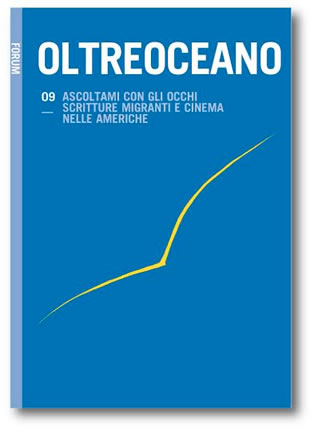Paesaggi e figure della frontiera tra Messico e Stati Uniti. Un itinerario tra cinema e letteratura
Keywords:
cinema e letteratura, frontiera, Messico, migrazione, chicanosAbstract
Negli ultimi decenni del ventesimo secolo si è venuto a creare un immaginario del tutto peculiare intorno alla Frontiera Nord del Messico, da sempre all’origine di forti motivi simbolici. Un immaginario legato alla sempre più numerosa emigrazione verso gli Stati Uniti, al narcotraffico e alle sue conseguenze, alla costruzione di strumenti di separazione sempre più sofisticati e violenti. Si analizzerà la costruzione di tale immaginario in un corpus costituito da cinque film e da altrettanti testi narrativi (racconti e romanzi) che costituiscono un inscindibile nucleo di produzione di elementi simbolici.
Landscapes and Representations of the Frontier between Mexico and the United States. An Itinerary between Literature and Cinema
In the last decades of the twentieth century a strong imaginary has been created around North Border of Mexico, an imaginary linked to the growing number of migrants from Mexico to United States, to the drug traffic and its consequences, to the building of instruments of separation increasingly sophisticated and violent. The article presents an overview of the construction of such imagery on both sides of the border.
Downloads
References
Anzaldúa, G. (1987): Borderlands / La Frontera. San Francisco, CA: Aunt Lute Book Company.
De Certeau, M. (2005): L’invenzione del quotidiano. Roma: Lavoro.
García Riera, E. (1988): México visto por el cine extranjero, III, 1941-1969. México-Guadalajara: Era / Universidad de Guadalajara.
Gómez Peña, G. (2011): Documented /Undocumented. Norton Anthology of Latino Literature. New York, NY: W.W. Norton & Company.
Iglesias, N. (1991): La producción del cine fronterizo. Una industria de sueño. Estudios sobre lasculturas contemporáneas, IV, 11, pp. 97-130.
Jablonska Zaborowska, A. (2007): Identidades en redefinición: los procesos interculturales en el cine mexicano contemporáneo. Estudios sobre las culturas contemporáneas. Época II, XIII, 26, pp. 47-76.
Maciel, D. (2000): El bandolero, el pocho y la raza: imágenes cinematográficas del chicano. México: Siglo XXI.
Mercader, Y. (2012): Imágenes femeninas en el cine mexicano de narcotráfico. Tramas, 36, pp. 209-237.
Paz, O. (1997): El laberinto de la soledad, 1950. Madrid: Cátedra.
Ponce Cordero, R. (2009): La frontera entre México y Estados Unidos en la gran pantalla. Pdf, pp. 125-131. Recuperato da http://translatin.snu.ac.kr/translatin/0907/pdf/trans09080715.pdf
Downloads
Published
How to Cite
Issue
Section
License

This work is licensed under a Creative Commons Attribution-NonCommercial-ShareAlike 4.0 International License.
The authors undertake to comply with the following conditions, which are considered accepted at the time of submission of their contributions.
The sending of a text implies that it is unpublished and not submitted to be published elsewhere.
1. If accepted, the author shall confer on the publisher the right to publish and distribute it both in paper form and in the online electronic edition. The published articles will be downloadable and made available in open access.
2. Provided that it correctly indicates that the first publication took place in the journal Oltreoceano. Rivista sulle migrazioni the author has the right to: a) reproduce the article in separate extracts or collected in a volume; b) publish the article on their personal website or teaching site provided that these sites are of a non-commercial nature; c) deposit the article in online archives of a non-commercial nature, linked to the institution they belong to or as part of projects for the non-commercial dissemination and open access of scientific works.
The use of contributions by third parties, for commercial or otherwise unauthorized purposes, is not allowed. The publisher declines all responsibility for the unauthorized use of the material published in the journal.












